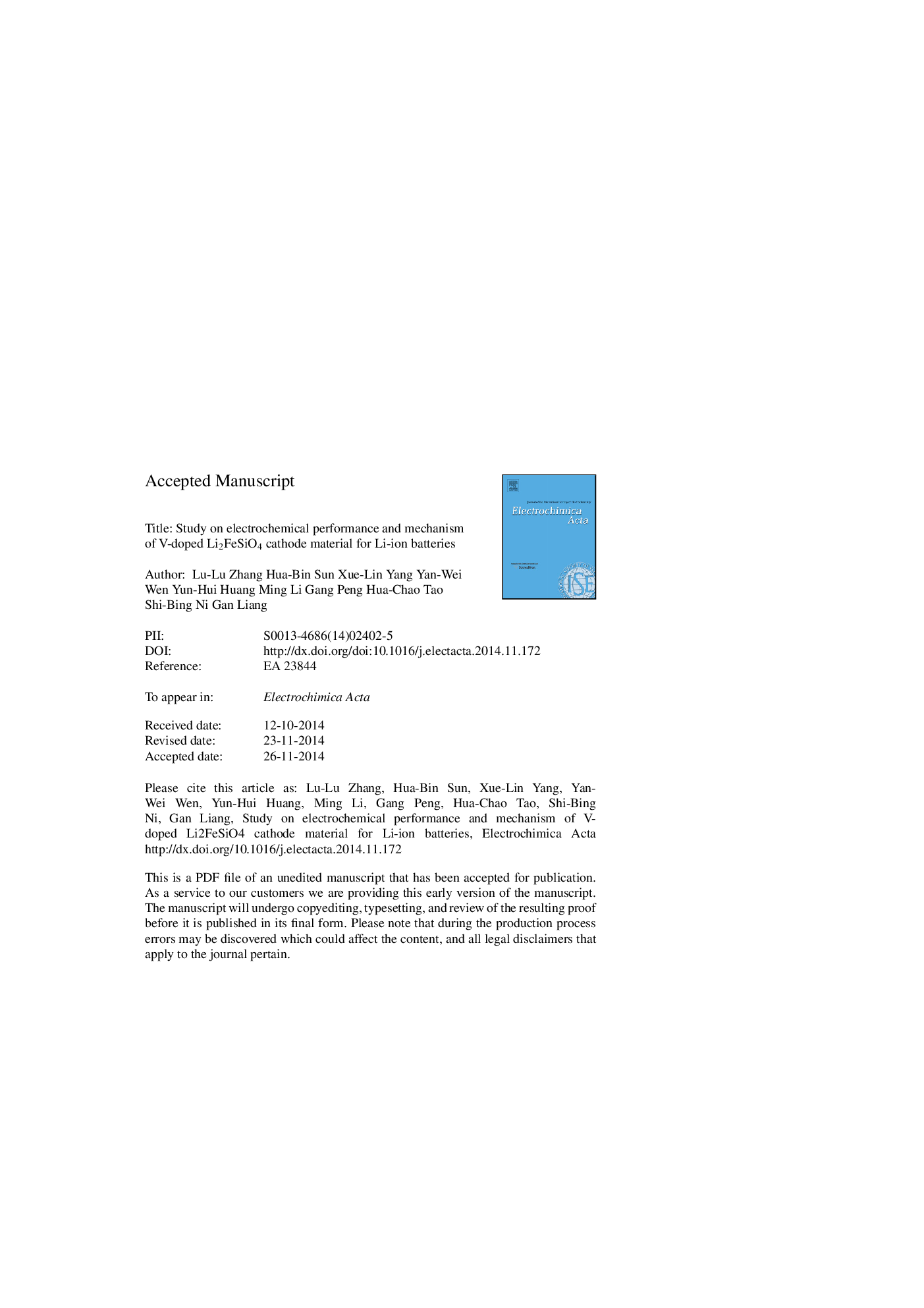| Article ID | Journal | Published Year | Pages | File Type |
|---|---|---|---|---|
| 6612632 | Electrochimica Acta | 2015 | 24 Pages |
Abstract
A series of Li2Fe1-xVxSiO4/C (x = 0.00, 0.03, 0.05 and 0.07) composites have been synthesized via a refluxing-assisted solid-state reaction. XRD results confirm the monoclinic structure with space group P21 for Li2Fe1-xVxSiO4/C compounds. TEM and Raman spectroscopy demonstrate V-doping can increase the graphitization degree of residual carbon. XPS confirms that V-incorporation does not change the divalent state of Fe, and the oxidation state of V in V-doped Li2FeSiO4/C is +3. Combined Ar-ion sputtering with XPS, it is found that V has been successfully doped into the crystal lattice of Li2FeSiO4. Electrochemical tests show that LFS/C-5 V delivers the highest initial discharge capacity of 220.4 mAh gâ1 and the biggest Li-ion diffusion coefficient of 1.60 Ã 10â11 cm2 sâ1. In addition, the density functional theory (DFT) calculations predict that V-doping decreases the electronic band gap of Li2FeSiO4, thus leads to significant improvement in the electrical conductivity of Li2FeSiO4. The enhanced electrochemical performance can be attributed to the increased electronic conductivity, the decreased charge transfer impedance, and the improved Li-ion diffusion coefficient. Our results clarified the nature of V doping into Li2FeSiO4 and demonstrated that V-doping is a promising approach to improve the electrochemical performance of Li2FeSiO4.
Related Topics
Physical Sciences and Engineering
Chemical Engineering
Chemical Engineering (General)
Authors
Lu-Lu Zhang, Hua-Bin Sun, Xue-Lin Yang, Yan-Wei Wen, Yun-Hui Huang, Ming Li, Gang Peng, Hua-Chao Tao, Shi-Bing Ni, Gan Liang,
